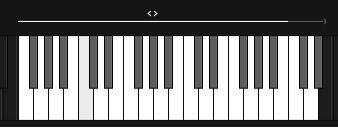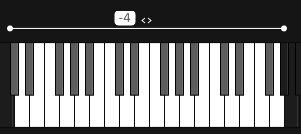How to use the Performance View

The Performance View holds the core of combining and controlling articulations across SINEplayer collections.
Like the Library View, it shows the Articulation List and Articulation Options - please see these articles for details about those two UI areas.
Articulation Properties and Variations
The left of the Performance View holds an area that displays relevant articulation-specific controls. These can be Variations (for example different vibrato styles), Tempo Controls, etc.
These elements will only show up if an articulation that needs/supports them is selected.
Variations
Variations are different sets of base samples for the same articulation. The most prominent example is vibrato style.

On articulations that have Variations, the assigned Variations CC will be shown at the top and can be adjusted there, directly. The default is set in the Options View as "Variations" in the Controller Map.
Move the Variations Slider with the mouse or use the assigned MIDI CC to switch between the possible Variations.
Switch Mode Area
Each Instrument (as loaded into the Articulation List) can operate in one of two modes in SINEplayer:
Mono Switch Mode and Poly Switch Mode.

These modes are independent, and different instruments can use different modes at the same time.
Mono Switch Mode
In this mode, one articulation at a time is selected per instrument. This selection can happen via Key Switches, MIDI CC values, or Program Changes. See Articulation List of details about how to map these modes.

Every articulation is represented by a square in the middle of the area. The active square is highlighted and you can move between articulations by the chosen mapping method or by clicking on it or using the arrow keys above the squares.
Poly Switch Mode
The Poly Switch Mode lets you switch and morph between a stack of articulations on the fly while playing.

Click Poly to enable it and set your Poly Map however you like it. The Poly Switch Mode is a powerful tool, and is explained in detail under its respective article.
Virtual Keyboard
At the bottom of the Performance View you will find the Virtual Keyboard.

It shows the Playable range of the currently editable articulation (the articulation marked with a dot in the Articulation List), all active Key Switches and shows representations of the Pitch Wheel and Mod Wheel.
The Virtual Keyboard is velocity-sensitive: Play closer to the upper part to trigger softer velocities, closer to the bottom end of a key to trigger high velocities.
If you wish to use your computer keyboard to play the virtual keyboard, Click on the keyboard, and the ASDFGHJKL keys will play white keys, while WE TYU OP will play black keys. This computer keyboard will start on C4. Keep in mind, it is possible your computer keyboard will not be taken as a Midi controller by your DAW and will not record what you play with it.
Playable Range
The Playable Range (e.g. the range the current articulations sound in) is displayed by white keys on the Virtual Keyboard. You can use the <> marker in the middle to shift it and drag the left and right edge to change the lower and upper end. Note that extreme range extensions will sound less than pleasant.
If the Playable Range has been adjusted in either direction, a thin line above the keys will show the extended/recorded range.

If the Playable Range has been shifted, a +/- indicator next to the drag arrows will show the transposition.

Key Switches
If the current instrument has multiple articulations loaded, and is set to react to Key Switches, these are displayed in a brown color in the Virtual Keyboard. You can use the <> marker in the middle to shift the Key Switch range. Note that this change will only influence the current instrument; if you want to change the Key Switches globally, it is best to change the setting in the Options View.
